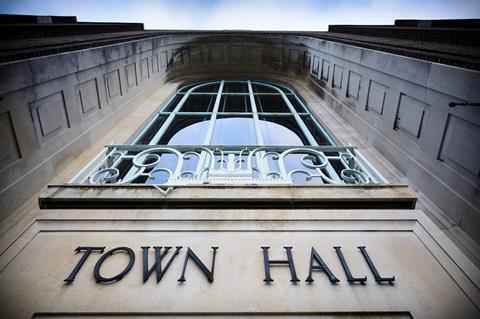‘Flipped’ model could allow councils more say over type and mix of homes and guarantee developers higher returns, report says
The typical viability appraisal model for schemes could be ‘flipped’ to calculate upfront the percentage of private homes needed on a site to produce the type of social housing a council needs, a report has suggested.
Thinktank Localis and the Housing & Finance Institute has this week published a report outlining a model, which it calls Public Rental Homes (PRH), which it believes could help councils better ensure the delivery of homes which are affordable to people on their waiting lists.

The report uses PRH as a new term for submarket council rental homes which is “not tarred with the ‘council house’ or ‘social rent’ brush.”
The paper suggests an alternative to the common viability approach, under which housebuilders work out how many affordable homes they can afford to “concede” and still retain an acceptable value for the land.
Under the ‘PRH’ model, a council would instead decide on the size and mix of homes needed to reflect the needs of their population across multiple sites.
Then on a site-by-site basis they would enter into negotiations with developers about the number of private homes needed on the site to allow the required PRH homes to become viable.
A scheme would be judged viable based on residual land value – the gross development value minus the total project cost – being zero or positive. If it is negative, cash would need to be found through grants, loans or leveraging council-owned land.
The developer would build the homes out and take all of the profit along with the risk. The developer would receive a profit of 20% on the affordable units, compared to the 6% or 7% it would make through a typical development appraisal.
The council would in return receive the freehold of the PRH homes under “rented in perpetuity” covenants. The report said the land for PRH homes could come from either the council, government or from private owners.
Journalist Peter Bill, who co-authored the report with urban regeneration expert Jackie Sadek, said the model would be more effective at attracting private capital into affordable housing than joint venture schemes.
Bill speaking at an event to launch the report in London yesterday, said: “I think joint ventures with councils are wrong, I think they are risky, and I think they fall apart very quickly when times get bad.”
He added “It’s much better if you want to attract private capital to allow it to have a proper return and that’s not 6% or 7% on the PRH but it should be 20% because that’s what they get on the private.”
Sadek said the model could make a contribution to affordable housing delivery although she stressed it would not be “the answer” to the housing crisis. She said the intention was to create a model which utilises powers that are already available to local authorities.
“We need to build out a whole new generation of council houses, but councils are hollowed out. Back in the 50s, 60s and 70s, you had the borough architect, the borough engineer, the borough surveyor but those people are no longer there”, she said.
“What we say is that local authorities have to go into partnership with the private sector and that means you’ve got to allow the private sector to make a proper rate of return and that’s got to be built into the model, or else they wouldn’t be interested.”
She added that the model would allow councils to take the lead in deciding the mix of housing on sites.
MP David Simmonds, chair of the all-party parliamentary group on planning and housing said:
“It seems to me that there is a real role for local authorities in working with developers to bring forward the kinds of developments that address the needs of priority groups”




























No comments yet